Sign up for The Wild
We’ll help you find the best places to hike, bike and run, as well as the perfect silent spots for meditation and yoga.
You may occasionally receive promotional content from the Los Angeles Times.
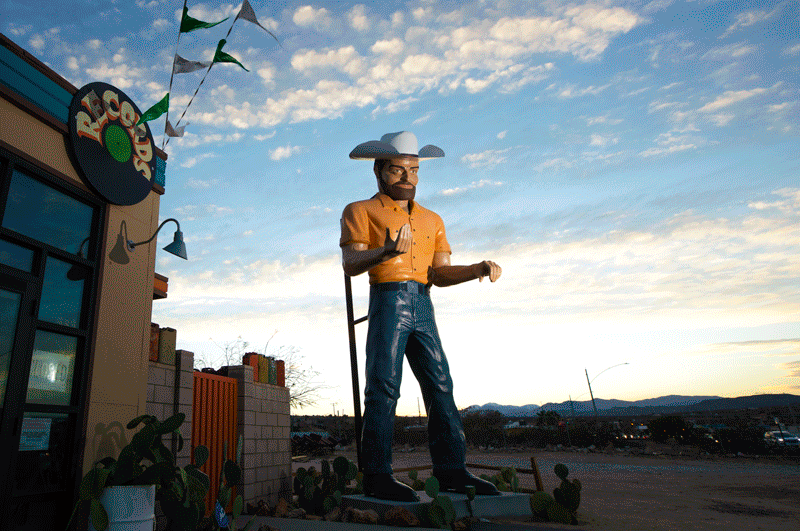
The sun was low, the cactus shadows were lengthening and laughter rang out amid the Airstreams.
Natalie Valdez, 36, and Clarence Tsay, 37, who last year got engaged at Joshua Tree National Park, had returned with a gaggle of friends from Los Angeles, San Francisco and beyond. Now they filled four tricked-out trailers in the AutoCamp resort, one of many shiny new enterprises in this ever-more-fashionable corner of the desert.
“I love Joshua Tree — its weirdness, its hippiness. I don’t want it to become commercial,” Valdez said.
“We don’t want it to become Tulum,” Tsay said, referring to the Mexican beach town that became an Instagram darling, attracted legions of upscale tourists and now struggles with overwhelmed infrastructure.
When a naturally beautiful destination starts getting too popular and luxury-oriented, he said, “There’s a fine line.”
Then their friend Hana Cho piped up.
“That’s the only reason I’m here — because there was a luxury option!” she said.
Actually, there are many.
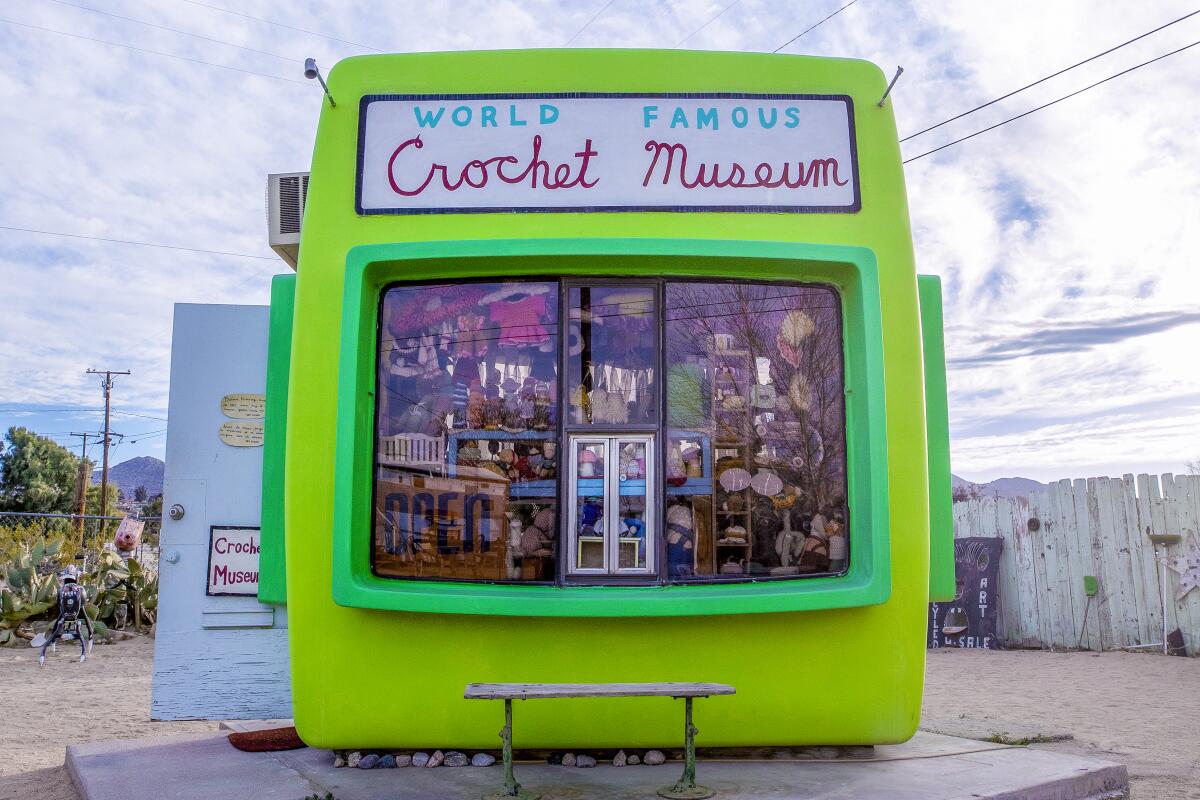
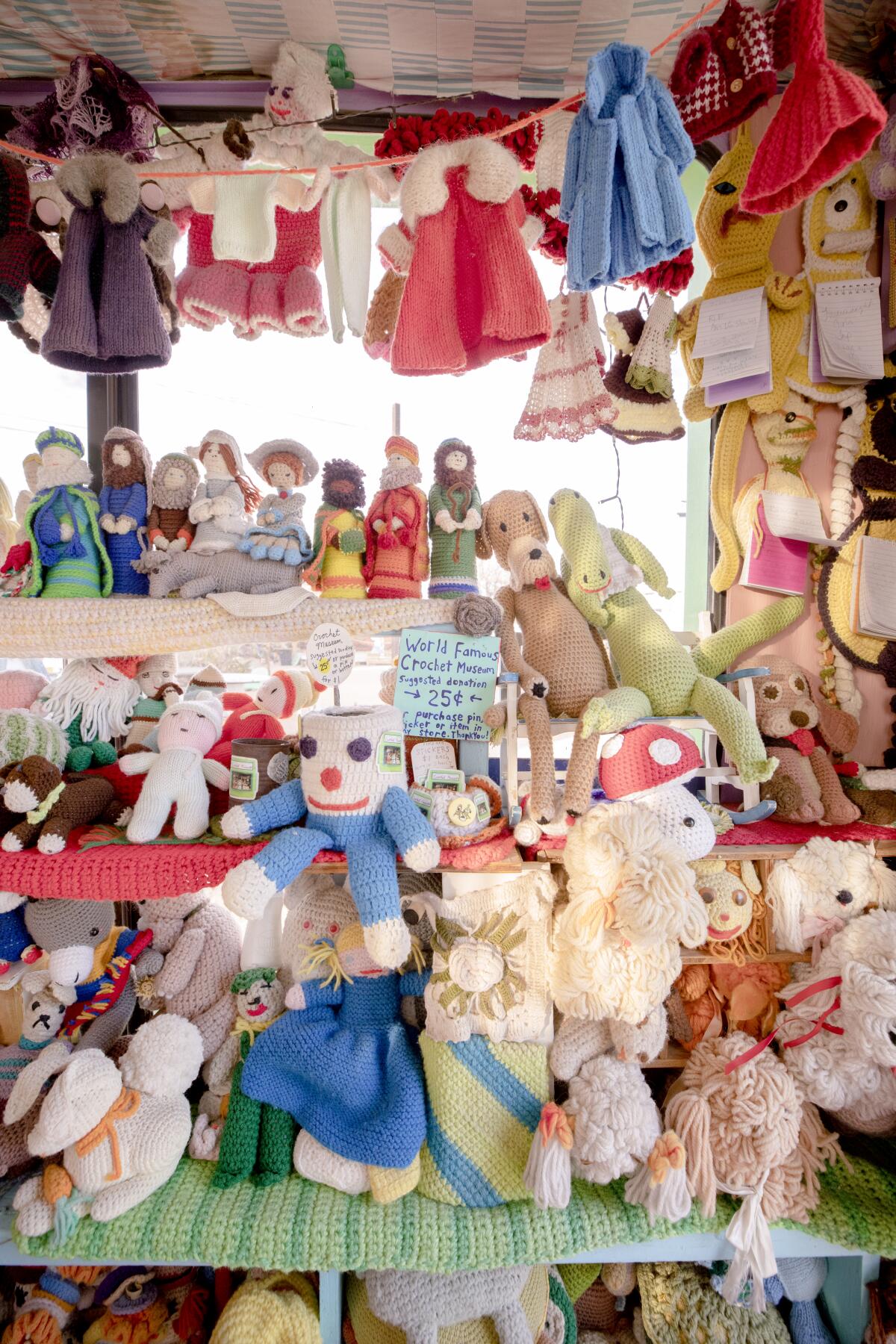
In fact, as more and more people arrive in the towns along Highway 62 near Joshua Tree National Park, those visitors and newcomers are spending freely on everything from neo-bohemian lodgings to vintage goods. In their eagerness to feel those desert vibes, they’ve set off a full-blown boom.
As first-timers quickly learn, hotels are few and far between but vacation rentals are just about everywhere.
For $3,460 per night, you can book “the Invisible House,” a mirror-walled home with a pool. For $450 to $800 per night, reserve a spring or fall stay in the A-Z West compound designed by artist Andrea Zittel. For $300? Maybe a yurt with Mongolian furniture.
When your retail adventures begin, Ricochet Wears (Joshua Tree) stands ready with old cowboy boots. Chasing an old Tom Waits album? White Label Vinyl in Twentynine Palms wants to help. Need a $3,000 fine-art print or a $16 bar of soap? Consult Mojave Flea Trading Post (which has stores in Yucca Valley and Palm Springs).
Afterward, sink into an hourlong sound bath with 27 new friends amid the crystal “singing bowls” of the domed Integratron in Landers. (No water, no soap, $50 per person, reservations a must.)
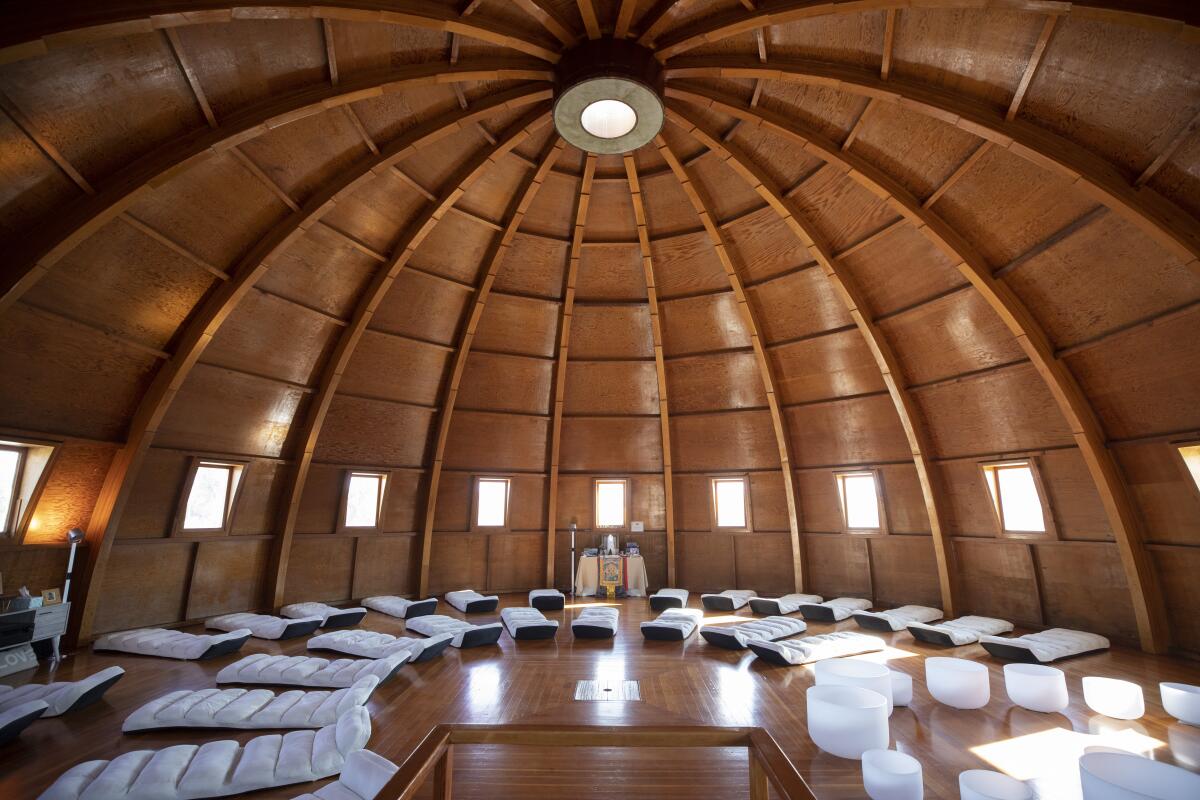
This burst of commerce and creativity follows the highway for 32 miles west to east through the Morongo Basin area, through the varied and formerly sleepy communities of Morongo Valley (population about 3,090), Yucca Valley (pop. 21,738), Joshua Tree (pop. 6,489) and Twentynine Palms (pop. 28,065). Pioneertown, about six miles north of Yucca Valley, is part of the same surge.
Joshua Tree National Park registered a record 3.06 million visitors in 2021, up 50% since 2015.
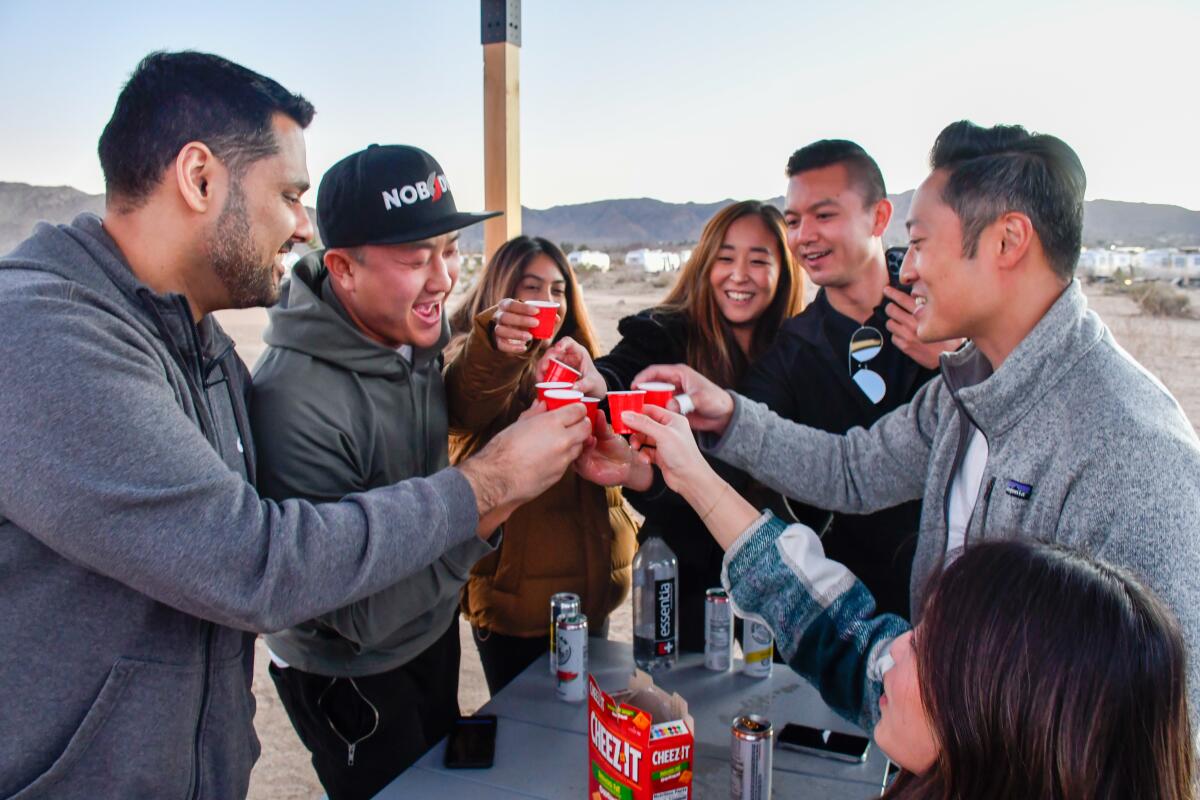
“The pandemic definitely created what I would call a tipping point,” said artist Eric Nash, who moved from Palm Springs to Yucca Valley seven years ago. “Every day I’ll read or hear about a new business ... the kinds of things you can’t do in L.A. or San Diego or Palm Springs for that matter.”
Meanwhile, many businesses that predate the pandemic are seeing more customers than ever before. In Yucca Valley, for instance, sales tax revenues have doubled since 2017.
“Anybody who owns a business in Joshua Tree is currently walking around in a dream state. It’s so busy,” said Jeff Hafler, 49, owner of the Beauty Bubble Salon and Museum in Joshua Tree.
“Those Airbnb people want something to do,” said Steve Halterman, co-owner of the Station, a 1940s former gas station now filled with souvenir T-shirts, mugs, posters and pottery.
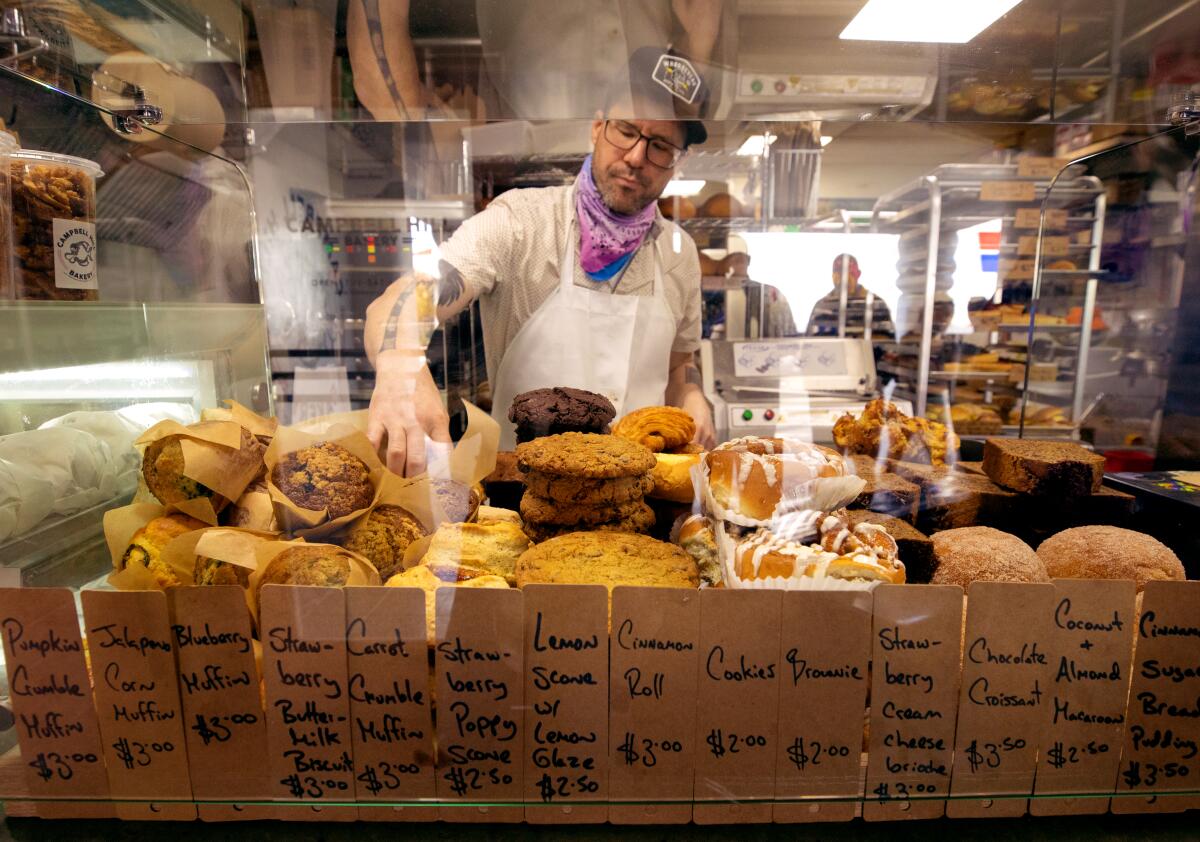
Though much of the area’s new tourism — both part-time and full-time occupancy — comes from Los Angeles, 120 miles west, another portion comes from nearby Palm Springs, where Midcentury Modernism is practically a way of life.
Now picture that style in conversation with the cosmic-cowboy sensibility that reached the high desert with rock star Gram Parsons (and his embroidered bell-bottoms) in the 1970s. Factor in thousands of tousled J-Tree rock climbers and boulderers, along with legions of party people drawn by the nearby Coachella musical festival (which will return in April after a two-year absence). Then consider that registered Republicans continue to outnumber Democrats in Yucca Valley and Twentynine Palms.
That’s the unique jumble you see now along the highway: Stetsons and Jetsons, rustic cabins and Airstream trailers, the occasional gay pride flag, the occasional Trump bumper sticker.
But with so many changes afoot and L.A. gas prices edging past $5 a gallon, how long will this surge last?
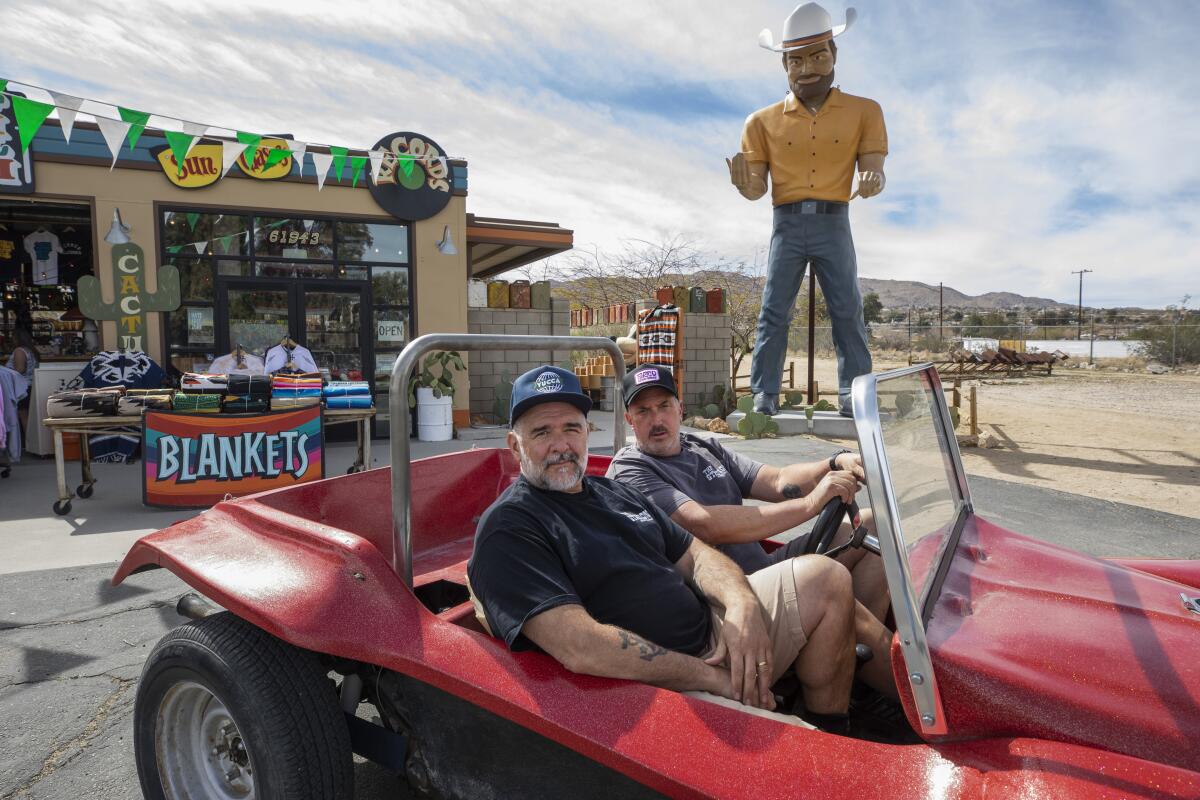
Traffic might be the most obvious complication of this boom. Even before the pandemic, the Desert Sun newspaper had labeled Highway 62 “the deadliest road in the high desert.” There’s also anxiety over water supply and rising rents that seem sure to drive away some of the artists and longtime locals who helped start this new era.
“Absolutely unsustainable,” tweeted Airbnb Whistleblower last year, lamenting the many high desert homes being converted into short-term rentals.
In the 12 months up to January, median home prices rose 42% in Joshua Tree, 38% in Twentynine Palms and 33% in Yucca Valley. In Yucca Valley — where tax revenues from vacation rentals and hotels have risen sixfold since 2017 — the town council voted in February to tighten restrictions on the rentals. Twentynine Palms officials are considering limits too.
Then there’s the question of the Joshua trees themselves, which are sprinkled throughout the area, especially in Yucca Valley. The state Fish and Game Commission is pondering now whether to classify the western Joshua Tree as an endangered species — a move that would protect the trees by dramatically curtailing construction in the short term and perhaps longer. A status report is due April 9.
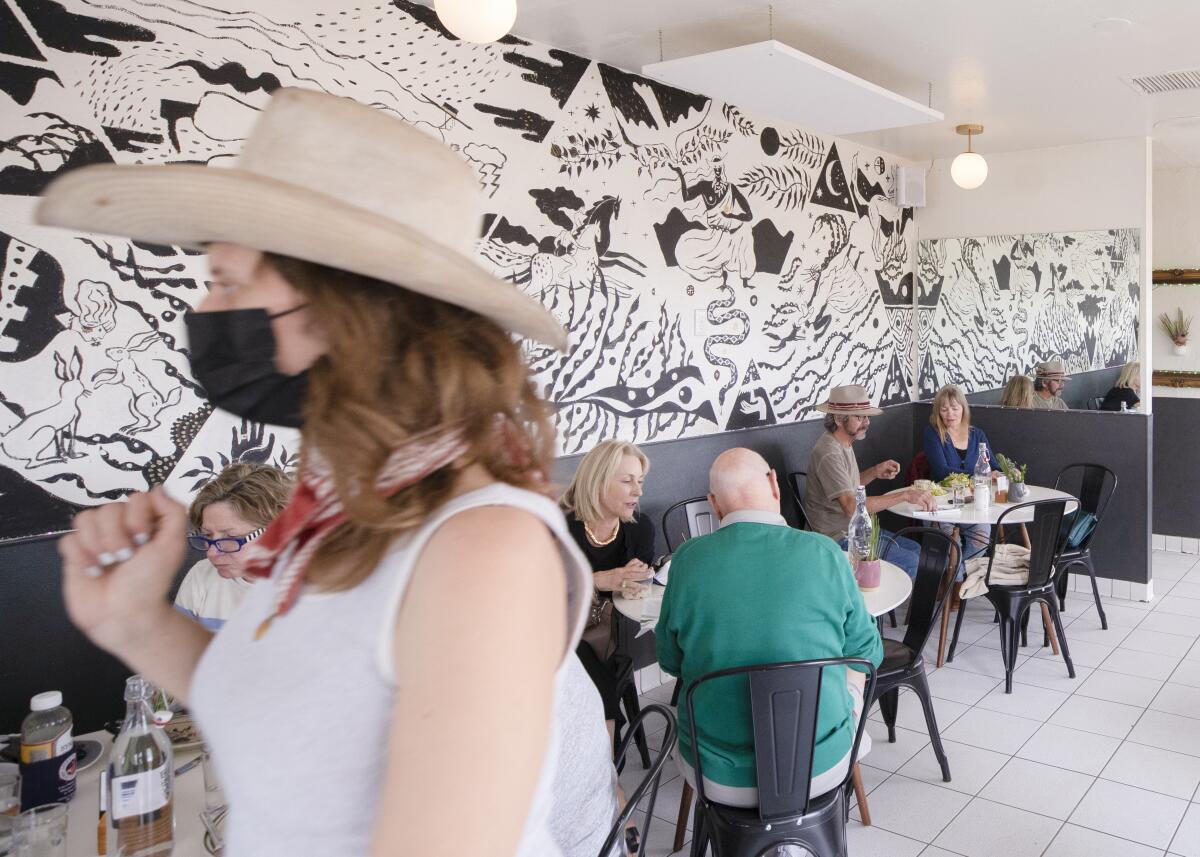
When visitors talk about Joshua Tree these days, they often mean the string of communities on Highway 62. Rolling west to east, you first see Morongo Valley and Yucca Valley, which has the area’s only Walmart and Home Depot and a growing number of new small shops.
A few miles farther east, the Joshua Tree community turns up: a tiny but lively business district, a busy national park entrance and a collection of galleries and studios.
Then, after another 10 miles of boulders and blacktop, you reach the city of Twentynine Palms, the last real town west of the Arizona border on this road. “Twentynine,” as locals know it, has its own park entrance, the landmark 29 Palms Inn and, just north, the Marine Corps Air Ground Combat Center, which houses 12,500 active-duty military personnel.
The self-sufficiency of that military base has long played a role in keeping Twentynine Palms sleepy. But here too “There’s definitely something going on that hasn’t gone on before,” said Michael Usher, 35, a former high school teacher who opened the city’s Grnd Sqrl gastropub in September.
The city reported record lodging revenues in the last quarter of 2021. And on March 12 local leaders were due to open Freedom Plaza, a 10-acre community center that will include a gym, event space and new national park visitor center.
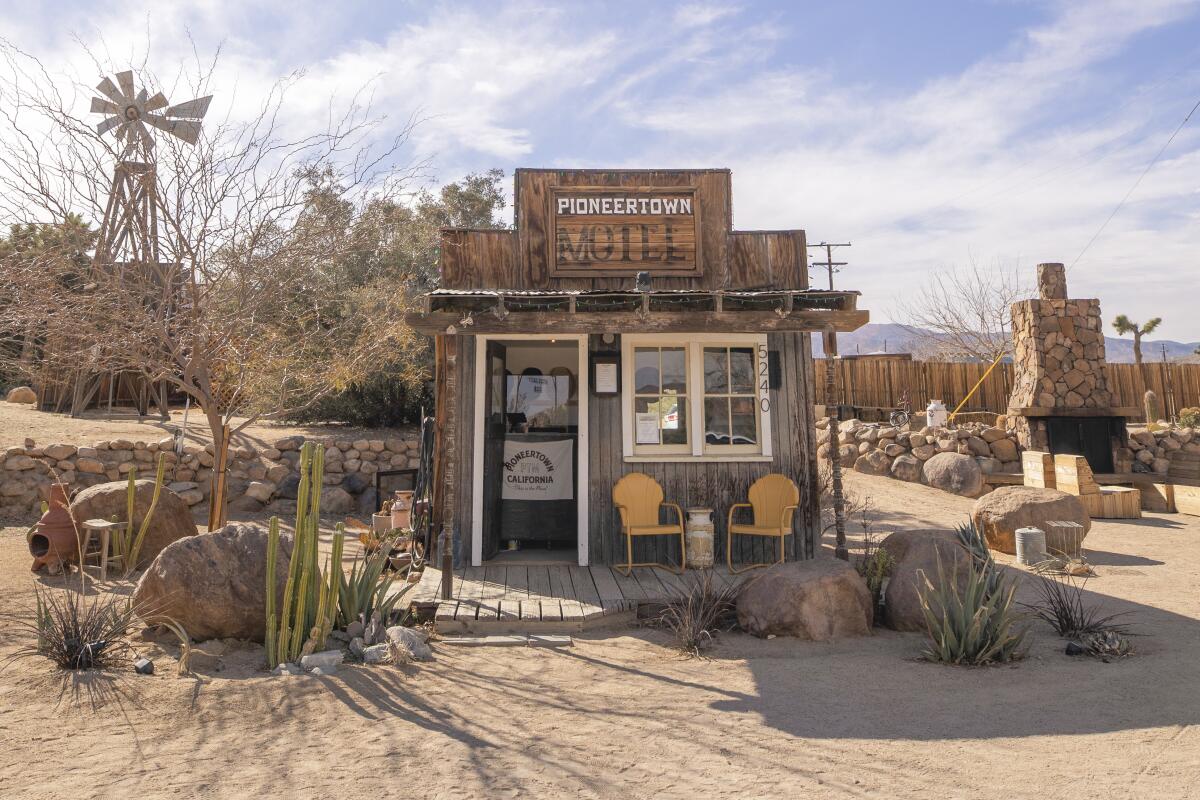
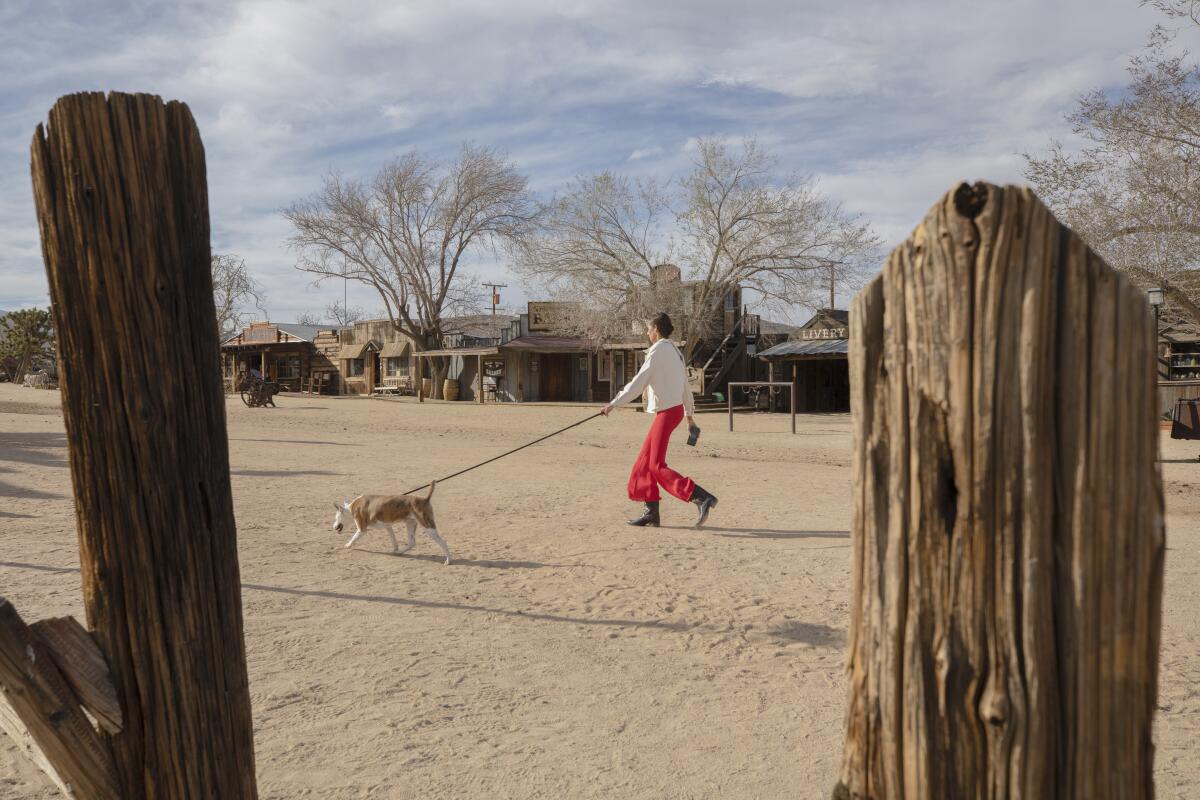
On busy winter and spring weekends from one end of the highway to the other, customers often fill the high desert’s eateries, including Joshua Tree’s Natural Sisters Cafe, Crossroads Cafe and Country Kitchen. Some grab coffee from the Joshua Tree Coffee Company or takeaway meals from the Dez. Elsewhere along the highway, customers queue up for baked goods from Luna Sourdough Bread (Yucca Valley) or Campbell Hill Bakery (Twentynine Palms), both opened in the last two years.
Discerning drinkers might pick out wines from the Bottle Shop (Joshua Tree), Desierto Alto (Yucca Valley) or the Wine & Rock Shop (Yucca Valley again). Or they might browse the Joshua Tree Farmers Market (Saturday morning).
Weekend thrifters might prowl the End in Yucca Valley or the nearby Sky Village Market Place.
At midday, some of the most ambitious eaters turn their attentions to La Copine, a little diner outside Yucca Valley that serves only lunch, Thursday through Sunday. There, diners often wait an hour or two to dig into duck confit, socarrat de champiñones and other serious seasonal fare.
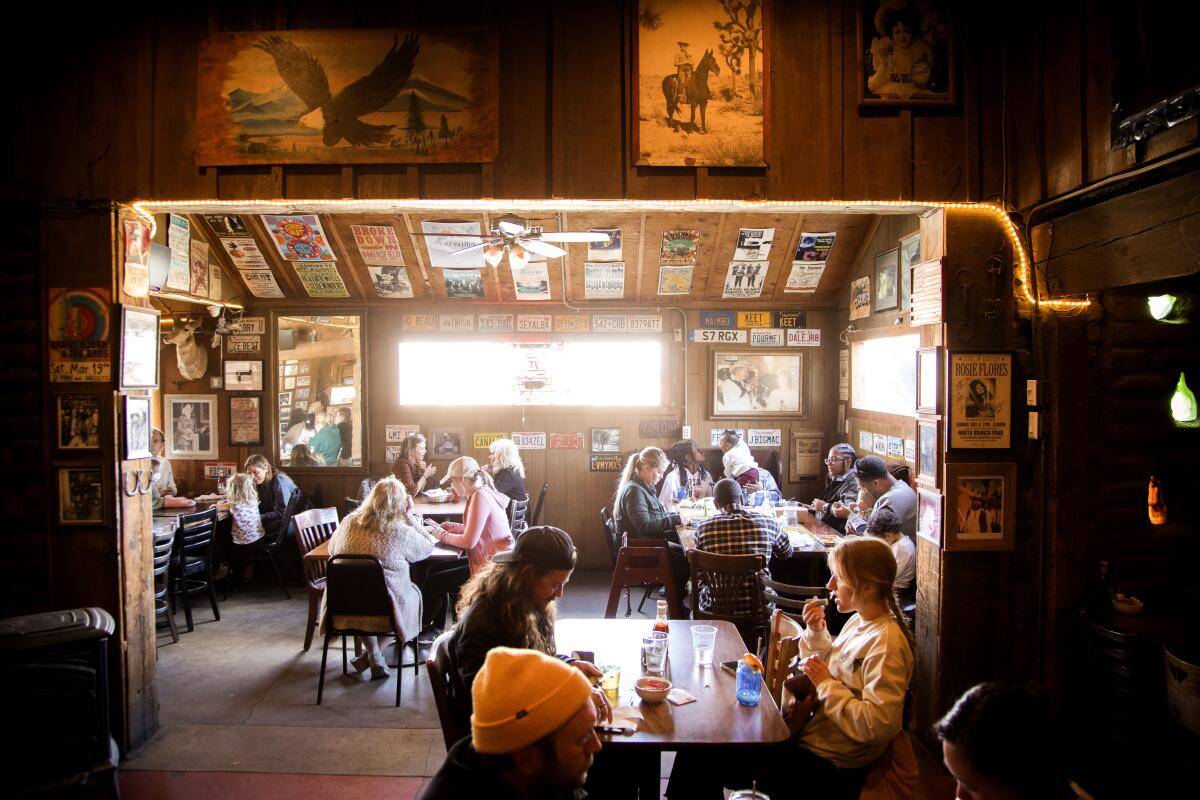
At dinner hour (or maybe it’s the cocktail hour), many a tourist makes the 12-mile expedition from J-Tree to Pioneertown, a former western movie set where Pappy & Harriet’s has been hosting live music and grilling meals since 1982. Since 2020, Pappy’s has been complemented by the neighboring Red Dog Saloon, where you can get $4 tacos or a $13 Negroni.

If the new boom has an emblem, it might be Big Josh, the 21-foot roadside fiberglass cowboy who towers over the Station. For years, the Station’s Halterman said, he and his husband, Glen Steigelman, operated the property strictly as a party rental venue and studio. But then they spotted the cowboy.
Once a muffler-shop mascot, he was laid out like Gulliver among the Lilliputians on a trailer at the Sky Village Swap Meet, priced at $6,800. They pounced.
Pretty soon Big Josh was throwing his long shadow across Highway 62 and his owners were selling Big Josh T-shirts. By 2018, the party venue had evolved into a retail shop. Since then, inventory and sales have multiplied — and the party rentals continue as well.
In an area that has long associated with wide open spaces and solitude, the recent stampede of visitors is “a two-edged sword,” said Nick Usaj of Los Angeles, who bought a property in Joshua Tree about four years ago.
I found him climbing at Intersection Rock, near the busy Hidden Valley campground. When he and his wife want to spend a night under the stars at short notice, Usaj said, they’ve largely stopped trying for campsites within the park because they book up so fast. Instead, he said, “we’re pretty much camping on [Bureau of Land Management] land every time. It’s different. ... You want the national park to do well. You want them to make money and people to see places. But ... “
“Yes,” said Usaj’s friend Ashley Burton, a longtime Joshua Tree rock climber, “it’s going to keep growing. But there’s also good people taking care of this place. I think it’ll be OK.”
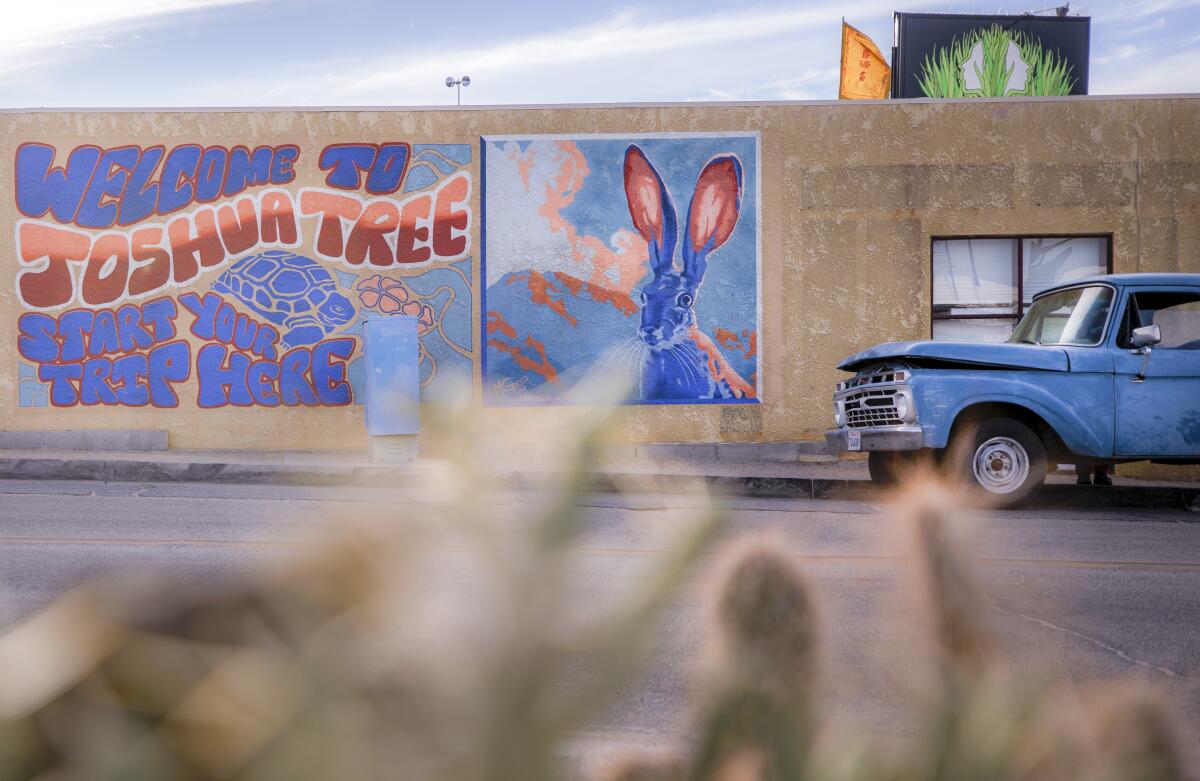
Sign up for The Wild
We’ll help you find the best places to hike, bike and run, as well as the perfect silent spots for meditation and yoga.
You may occasionally receive promotional content from the Los Angeles Times.